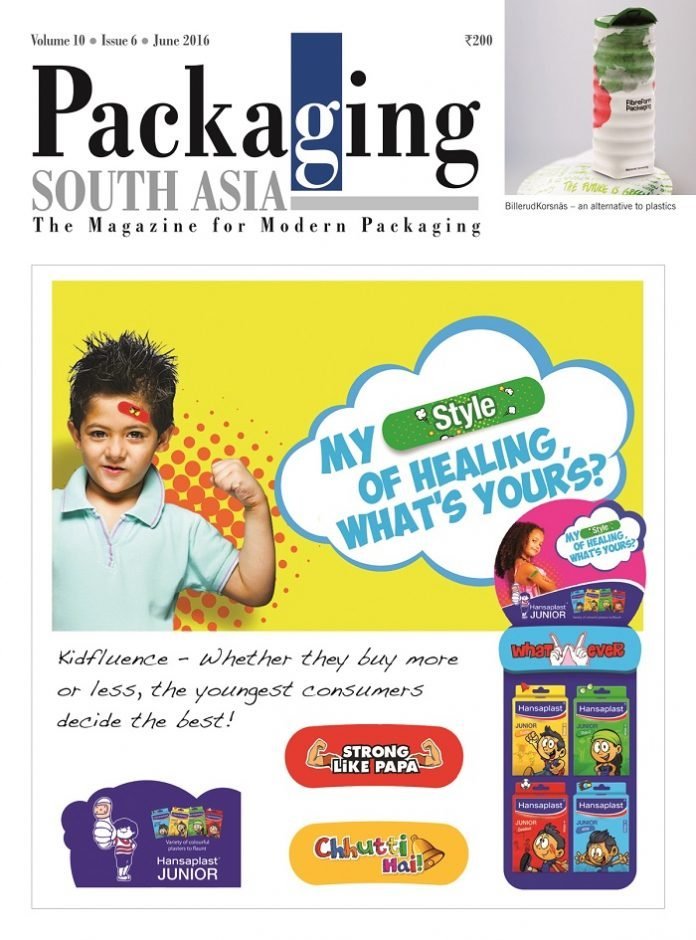According to researchers and studies conducted by international groups, catchy packaging plays a pivotal role in persuading kids to pick up nutritious food products from the product shelf. Several studies undertaken on kids across the globe unanimously observed that product selection is driven largely by appealing colors, images and shapes that appear on the packs. Dr CM Reddy, chief scientific officer, Innovertus Nutrition Technologies, is of the
opinion that one needs to present something out-of-the-box. “To influence a purchase, the pack has to attract first. This is the ballgame of packaging,” he says.
Studies back positive impact
Another study conducted by Stanford University explains that packaging designs have a substantial influence on the assessment of identical products. In the global market, packaging majors like Lieken Urkorn in Germany bring innovations into special packaging designed for kids. The company has so far done a number of workshops to enhance their packaging competency. In the workshop, they invited young children to a ‘bread camp’ to jointly develop a sandwich for school breaks that meets the taste of little gourmet and fulfills the demands of parents at the same time. The company’s popular Mampfred bread is yet another kids’ favorite with attractive artwork and designs on packs. The cheerful bread slice is designed by Christoph Peterson Design Studio and graces the colorful packaging of the bread.
One important factor in packaging food items for kids is the usage of graphics. Colorful designs with some popular cartoon or movie characters; will make the product sell well among the young consumers. With the right graphic elements and designs in the packaging, any product can win over the young shoppers.
 Recently, Burger King in one of its packaging used cartoon characters on paper packs of French fries delivered at its joints. Their design received phenomenal response from kids. Shivendra Pratap Singh, a brand consultant from one of the leading advertising agencies based in Mumbai observes, “We usually see kids associating more with the toon characters than with the products. We are assisting one of our clients from the pharmaceutical industry to develop packaging design for young consumers. The major catch here is that the products are imparting nutrition, which aid in better growth and efficient metabolism. Thus, the products are innovative and based on concepts like nutritional chocolate or nutritional chips or less fat chips or with micro-nutrients like potassium and so on.”
Recently, Burger King in one of its packaging used cartoon characters on paper packs of French fries delivered at its joints. Their design received phenomenal response from kids. Shivendra Pratap Singh, a brand consultant from one of the leading advertising agencies based in Mumbai observes, “We usually see kids associating more with the toon characters than with the products. We are assisting one of our clients from the pharmaceutical industry to develop packaging design for young consumers. The major catch here is that the products are imparting nutrition, which aid in better growth and efficient metabolism. Thus, the products are innovative and based on concepts like nutritional chocolate or nutritional chips or less fat chips or with micro-nutrients like potassium and so on.”
Here the price is one of the major factors in the product development while packaging constitutes another aspect that will help create the visual appeal and persuade kids to buy the product. Products with kids as the target group need to have graphics, colors and toned characters that they can instantly relate with.
Towed demand
As the name suggests, Towed demand is one which is driven by not exactly by the buyer but may be by his friends, relatives, complementary needs or others. Singh observes, “A package of tomato ketchup with a graphic of a tomato smiling is likely to grab eye balls faster and the kids will demand for the same pack of ketchup with graphics. Today, the decision for buying a product rests mostly on kids rather than their parents. This example of towed demand clearly indicates that the demand for products in this segment can be driven through graphics. You may see a chocolate wrapper with a Packman (a well-known game of the ’90s) visual on it would definitely attract the young segment. There is a growing need to brand and package healthy products options in the food segment, which will eventually lead to imparting the necessary nutrition.












